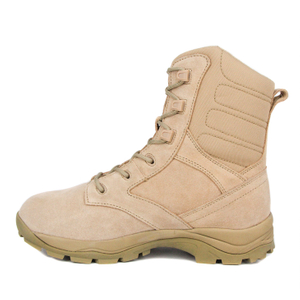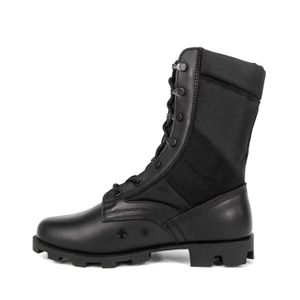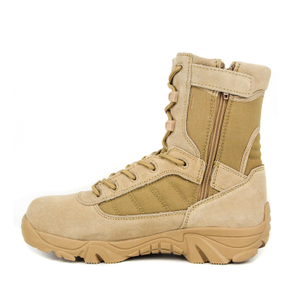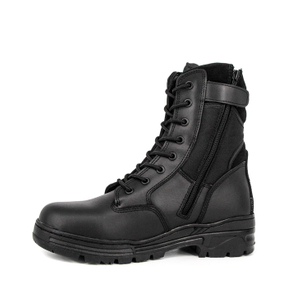Sole separation happens when glue breaks down, materials get hot or wet, or shoes are not used for a long time. You might see this more if your shoes do not fit, you use them for the wrong sport, or you wash them in a machine.
Cause | Explanation |
High Temperatures | Heat makes the glue that holds the sole weak. |
Wrong Size | Bad sizing puts extra pressure and causes the sole to come off. |
No Usage Over Time | Shoes get weak and fall apart if you do not use them. |
Incorrect Activity | Using shoes for the wrong thing can hurt them. |
Machine Washing and Drying | Washing and drying in machines can break and separate the soles. |
Knowing these reasons helps you fix problems fast and keep your shoes nice.
Key Takeaways
Sole separation can happen because of weak glue, shoes that do not fit right, or things like heat and wetness. Knowing why this happens helps you stop problems.
Storing shoes the right way is very important. Keep shoes clean and dry. Put them in a cool place. This helps keep them strong and stops sole separation.
Taking care of your shoes can make them last longer. Clean your shoes often. Use sprays that keep water out. If you see early signs of sole separation, fix it with glue.
Wearing different shoes gives the materials time to rest. This helps stop damage and keeps your feet safe. It is a simple way to avoid getting hurt.
Buy good shoes made with strong materials and good building methods. This choice makes your shoes last longer and feel better.
Causes Of Sole Separation
Adhesive Failure
Adhesives keep your shoes together. When glue gets weak, the sole starts to peel off. This happens a lot in running shoes and hiking boots. These shoes go through rough use. Many things can make glue fail:
The shoe industry needs glue that works in heat and wet places.
Using the wrong glue or putting it on badly makes shoes weaker.
Hot or wet places can make glue soft or break easily.
Glue is important for how long shoes last. If glue cannot take stress, the sole comes off sooner. Companies use different glues with different strengths:
Adhesive Type | Durability | Resistance to Separation | Flexibility |
Polyurethane | High | Excellent | Very Flexible |
Neoprene Cement | Strong | Excellent | Moderate |
Cyanoacrylate | Low | Poor | Rigid |
Milforce uses strong glue and checks quality to make sure shoes stay together, even in tough places.
Environmental Impact
Shoes face problems from the environment. Hot weather can make glue weak. This makes it easier for the sole to come off. Leaving shoes in a hot car or near a heater is bad. The glue can get soft and lose its hold. Wet shoes are also a problem. If shoes get wet and do not dry, glue breaks down faster. Always keep shoes in a cool, dry place to stop sole separation.
Hydrolysis
Hydrolysis is a chemical change that breaks down shoe soles. This happens most with polyurethane. Water in the air reacts with the sole and makes it fall apart. This can happen even if you do not wear the shoes much. Warm and wet air makes this happen faster. You might see this in running shoes that sit for months. To stop hydrolysis, keep shoes dry and use them often.
Improper Fit Or Use
Shoes that do not fit right put stress on seams and glue. Tight or loose shoes can make the sole come off. Using shoes for the wrong thing also causes problems. For example, using running shoes for hiking adds extra stress. This can break the bond between the sole and the top. Hiking boots are made for rough ground. Running shoes are for smooth paths. Pick the right shoe for what you do to keep them in good shape.
Material Quality
Good materials help shoes last longer. Leather lasts much longer than fake materials. Real leather can last over 50 years. Fake leather usually lasts only 2 to 10 years. Shoes with better materials are less likely to have sole separation.
Material Type | Durability | Likelihood of Sole Separation |
Leather | 50+ years | Lower likelihood |
Synthetic | 2-10 years | Higher likelihood |
Milforce checks quality at every step. They look at materials, make sure glue is good, and check shoes before sending them out. These steps help stop sole separation and help your shoes last longer.
Tip: Always look at the quality of materials and how shoes are made before you buy. Good shoes are a smart choice for your feet.
Preventing Sole Separation
Storage Tips
Proper storage plays a big role in keeping your shoes in good shape. If you want to prevent sole separation, you need to store your shoes the right way. Here are some tips to help you:
Clean your shoes before putting them away. Dirt and moisture can cause stains and bad smells.
Let your shoes breathe. Make sure they are completely dry before storing them. This helps stop mold from growing.
Store your shoes in a cool, dry place. High heat and humidity can weaken the glue and materials.
Use shoe trees. These help your shoes keep their shape and absorb extra moisture.
Polish and condition leather shoes. This keeps the leather soft and protected.
Keep shoes out of direct sunlight. Sunlight can dry out and fade the materials.
Never stack your shoes. Stacking can crush or warp them.
If you follow these steps, you will help your running shoes and hiking boots last longer.
Tip: Always check your shoes for dampness before storing them. Dry shoes are less likely to have problems later.
Maintenance Routine
A good maintenance routine helps you prevent sole separation and keeps your shoes looking new. Experts recommend these steps:
Clean your shoes every two weeks if you wear them often. If you wear them less, clean them when they look dirty.
Use a waterproof spray to protect the glue and materials from moisture.
If you see the sole starting to come off, use shoe glue. Clean the surfaces, apply the glue, press them together, and let them dry for a full day.
For a stronger fix, stitch the sole back to the shoe with a needle and thread.
If you cannot fix the shoe at home, visit a shoe repair shop for help.
Regular care makes a big difference. When you take care of your running shoes and hiking boots, you help them stay strong and comfortable.
Shoe Rotation
Rotating your shoes is a smart way to prevent sole separation. When you wear the same pair every day, the materials do not get a chance to rest. This can make the glue and foam break down faster, especially in running shoes.
Switch between at least two pairs of running shoes. This gives the foam in the midsole time to bounce back.
Experts say rotating shoes can lower your risk of injury by up to 39%. It also helps your shoes last longer.
Try to give each pair at least 24 hours to recover before wearing them again.
If you use hiking boots, rotate them with other sturdy shoes when possible. This keeps the materials fresh and helps prevent problems.
Note: Shoe rotation is not just for athletes. Anyone who wears shoes daily can benefit from this simple habit.
Choosing Quality Shoes
The quality of your shoes matters a lot when you want to prevent sole separation. High-quality shoes use better materials and stronger construction methods. For example, the Goodyear welt construction method uses a leather strip stitched to the upper and insole, then attaches the outsole. This design makes the shoe more durable and water-resistant. You can even resole these shoes, which means they can last for many years.
Milforce uses advanced methods like Goodyear welt, vulcanization, and injection molding. These techniques make running shoes and hiking boots stronger and less likely to fall apart. When you choose shoes built with these methods, you invest in comfort and long-term value.
Remember: Always look for shoes with strong stitching, quality glue, and good materials. This helps you avoid problems and keeps your feet happy.
Fixing Sole Separation
Quick Repairs
You can fix sole separation quickly if you catch it early. Look for small gaps between the sole and the upper part of your shoe. Clean the area with a dry cloth. Apply a strong shoe adhesive and press the sole and upper together. Hold them tightly for a few minutes. Let the shoe sit overnight so the glue can set. This method works well for running shoes that show early signs of wear.
Tip: Always keep a shoe repair kit at home. You never know when you might need it.
At-Home Solutions
Many adhesives work well for at-home repairs. You should choose the right glue for your shoe type. Here are some top choices:
Boot-Fix Glue: Quick-setting and flexible, great for athletic shoes.
Shoe-Fix Glue: Offers an instant bond that’s both strong and flexible.
Loctite Shoe Glue: Versatile and water-resistant, perfect for a variety of materials.
Gorilla Glue: Expands as it cures, filling gaps and providing a strong bond—ideal for outdoor shoes.
E6000 Craft Adhesive: Industrial-strength and flexible, best for porous materials.
When you repair running shoes or hiking boots, make sure the glue matches the material. Contact cement works well for rubber and leather. Loctite Shoe Glue and E6000 Craft Adhesive also give strong results. Always follow the instructions on the adhesive package.
Note: Let the glue dry for at least 24 hours before you wear your shoes again.
Professional Help
Sometimes, you need professional help for sole separation. If the sole comes off completely or the shoe structure feels weak, visit a shoe repair shop. Professionals use strong adhesives and special tools. They can fix running shoes and hiking boots so they last longer. Professional repairs extend the life of your footwear and help the environment by reducing waste. Repairing boots instead of replacing them gives you more value and keeps your favorite shoes in use.
Professional repairs can save your shoes when home fixes do not work.
Repair shops often offer stitching and sole replacement for tough jobs.
You help the planet when you choose repair over buying new shoes.
Callout: A sole split does not mean you need new shoes. Repair gives your footwear a second life.
Conclusion
You can keep your hiking boots in great shape by following a few simple steps.
Check for signs of wear often.
Store shoes in a cool, dry place.
Clean and dry them after each use.
Rotate your shoes to let them rest.
Choose quality brands for long-lasting comfort.
Smart care and wise choices help you avoid problems and enjoy your footwear longer. Milforce offers reliable options for those who want shoes that last.
FAQ
What causes the sole to separate from my shoes?
You often see sole separation when glue breaks down, shoes get wet, or you store them in hot places. Using shoes for the wrong activity or wearing the wrong size can also cause this problem.
How can I stop my boots from falling apart?
You should clean and dry your boots after each use. Store them in a cool, dry place. Rotate your shoes and check for early signs of wear. Choose boots made with strong construction methods.
Can I fix sole separation at home?
Yes! You can use shoe glue for small gaps. Clean the area, apply glue, and press the parts together. Let the shoe dry for 24 hours. For big repairs, visit a shoe repair shop.
Why should I choose Milforce boots?
Milforce boots use high-quality materials and advanced construction methods like Goodyear welt and vulcanization. You get durable, comfortable boots that last longer and perform well in tough conditions.


























